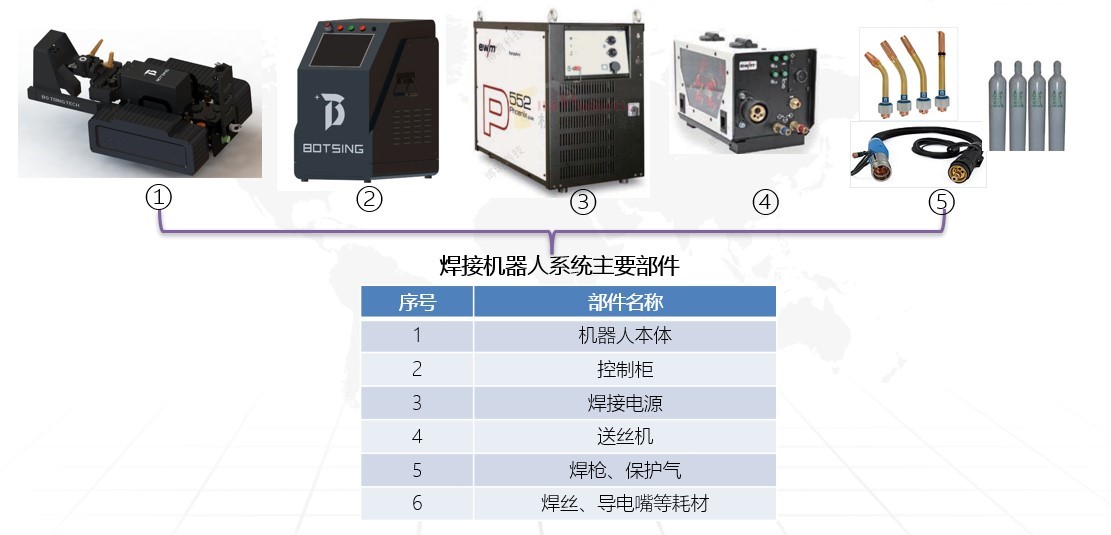Let's learn about the cooling methods of welding robots together
Date:2021-09-27 Views:895
When welding robots perform welding operations, the temperature of their molten pool is related to many factors, including electrode angle, welding time, electrode diameter, welding method, etc. Therefore, once the temperature of the molten pool is found to be too high, it is necessary to start from these aspects to achieve cooling.

Secondly, it is necessary to strictly control the arc burning time of the welding robot system. The frequency of arc breaking and the arc burning time directly affect the temperature of the weld pool. Due to the thin wall of the pipe, the ability to withstand arc heat is limited. If the arc breaking frequency is slowed down to reduce the temperature of the weld pool, it is easy to produce shrinkage holes. Therefore, the arc burning time can only be used to control the temperature of the weld pool to avoid excessive height or the formation of weld nodules inside the pipe.
Under normal circumstances, welding robots are required to select welding current and electrode diameter based on the spatial position and welding level of the weld seam. When starting welding, the welding current and electrode diameter selected are larger, while the vertical and horizontal positions are smaller. Only in this way can the temperature of the molten pool be more easily controlled and the weld seam be formed.
Based on past experience, when welding robots use circular bar transportation, the temperature of the molten pool is higher than that of the crescent bar transportation, and the crescent bar transportation temperature is also higher than that of the serrated bar transportation. Therefore, it is recommended to use serrated bar transportation as much as possible, and the swing amplitude and pauses on both sides of the groove are used to effectively control the temperature of the molten pool.
When welding robots perform welding operations, the temperature of their molten pool is related to many factors, including electrode angle, welding time, electrode diameter, welding method, etc. Therefore, once the temperature of the molten pool is found to be too high, it is necessary to start from these aspects to achieve cooling.

Secondly, it is necessary to strictly control the arc burning time of the welding robot system. The frequency of arc breaking and the arc burning time directly affect the temperature of the weld pool. Due to the thin wall of the pipe, the ability to withstand arc heat is limited. If the arc breaking frequency is slowed down to reduce the temperature of the weld pool, it is easy to produce shrinkage holes. Therefore, the arc burning time can only be used to control the temperature of the weld pool to avoid excessive height or the formation of weld nodules inside the pipe.
Under normal circumstances, welding robots are required to select welding current and electrode diameter based on the spatial position and welding level of the weld seam. When starting welding, the welding current and electrode diameter selected are larger, while the vertical and horizontal positions are smaller. Only in this way can the temperature of the molten pool be more easily controlled and the weld seam be formed.
Based on past experience, when welding robots use circular bar transportation, the temperature of the molten pool is higher than that of the crescent bar transportation, and the crescent bar transportation temperature is also higher than that of the serrated bar transportation. Therefore, it is recommended to use serrated bar transportation as much as possible, and the swing amplitude and pauses on both sides of the groove are used to effectively control the temperature of the molten pool.











